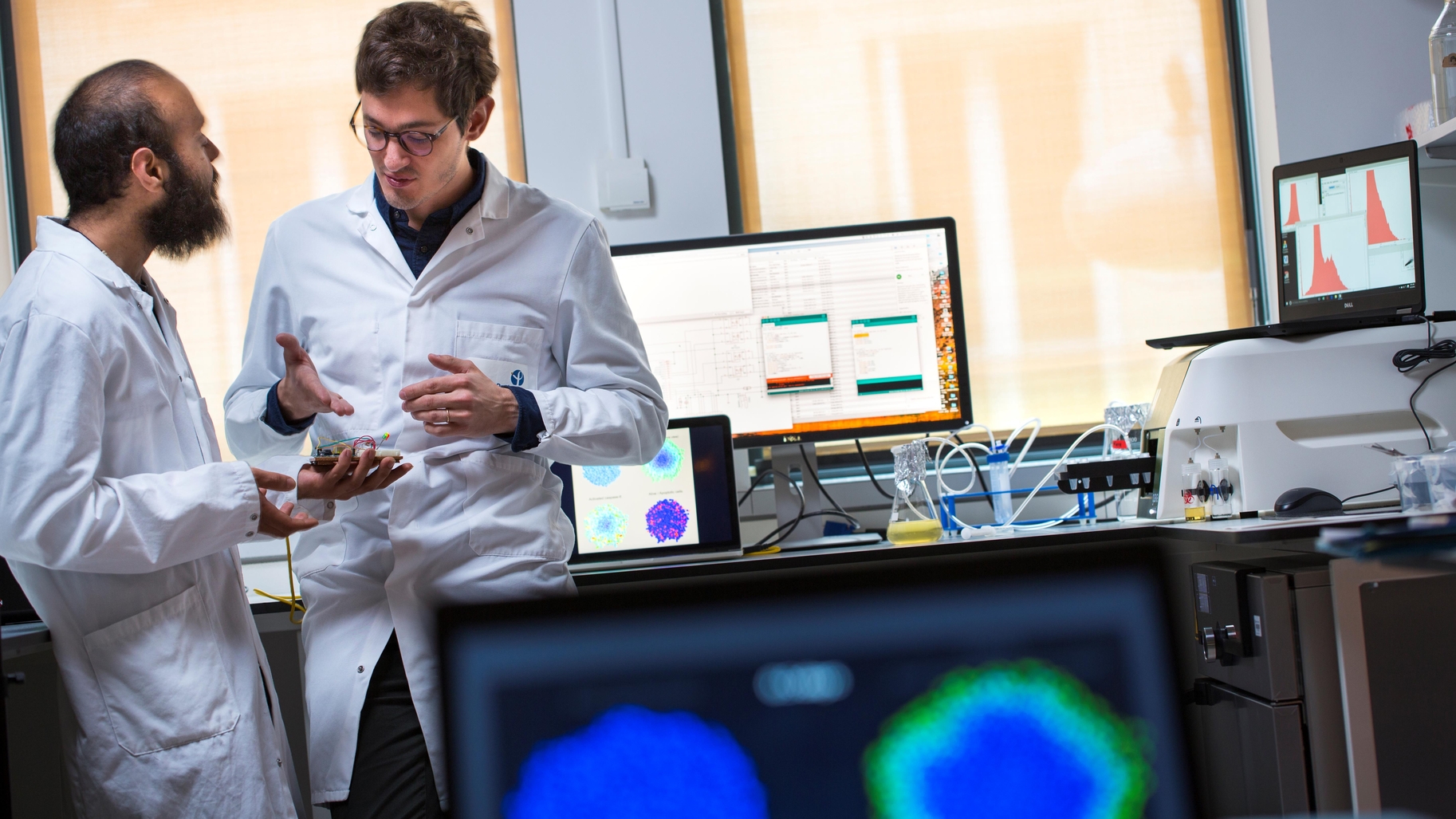
The close collaboration between the Institut Pasteur and Inria, formalised by the InBio joint research structure - whose aim is to develop a methodological framework enabling a quantitative understanding of the functioning of cell processes - confirms the utility of interdisciplinary research combining experimental approaches and methodological developments.
Indeed, in these two articles on the control by computer of cell processes, the researchers demonstrate how hybrid experimental platforms, combining microscopes and software, make it possible to interface - at cell level - living things with real-time control algorithms. The two articles illustrate how these solutions enable new behaviours that are easily reprogrammable for controlled cell populations to be obtained. This externalised control of living things should become a formidable research tool for the in-depth understanding of the biological role of certain proteins and for the optimisation of bioproduction processes.
- Article 1 : Shaping bacterial population behavior through computer-interfaced control of individual cells , in Nature Communications , 16 novembre 2017
- Article 2 : Balancing a genetic toggle switch by real-time feedback control and periodic forcing , in Nature Communications , 17 novembre 2017
Computer science at the helm of biology, or how to control a cell population by computer
The aim of synthetic biology, which brings together biology and engineering, is to (re)program cells so that they improve their productivity in a specific task or carry out a new task efficiently. One of the challenges of synthetic biology is therefore to circumvent the limitations of existing biological systems. It is, for example, difficult to obtain the same gene expression from one cell to the other even if they are both cultivated in the same environment. Thanks to these cutting-edge technologies, the researchers should succeed in controlling a cellular process over a long period in a very homogeneous manner.
The researchers from the Institut Pasteur, Inria, the CNRS, Paris Diderot University and the IST have developed two platforms connecting a microscope to a computer. The cells are placed in a microfluidic device enabling them to be subjected to variations in their chemical environment or light stimulations. The computer program decides on the modifications to be made to the chemical or light environment of the cell, depending on its common behaviour and the desired objective with regard to cell behaviour. The computer also manages the acquisition of images by the microscope and their analysis in order to know cellular responses in real time.
In the first article, researchers from the InBio - Experimental and Computational Methods for Modelling Cellular Processes unit (Institut Pasteur/Inria) and IST Austria used optogenetics to activate gene expression using exposure to light. The use of a fluorescent protein enables the measurement of the quantity of protein produced. A controller using a model of the system subsequently makes it possible to choose, in real time, the dynamic perturbations to be applied taking into account the future behaviour of the cells. Thanks to the computer program they have created, the researchers have the possibility of controlling each cell individually in different ways, or to create communications between several cells that pass each other messages in an easily reconfigurable order.
“We have managed to create an experimental platform that is partly biological and partly virtual. The virtual parts of these circuits can be modified arbitrarily in order to rapidly explore cell behaviours, even beyond what was, until then, biologically possible ”, comments Jakob Ruess, co-first author of article 1.
In article 2 Grégory Batt, co-last author and head of the InBio unit, explains how they succeeded in driving a cell system into an unstable configuration:
We designed a computer program that aims to force the cells to take binary decisions in a random manner. To do this, the cells are driven into an unstable region - like mountain climbers on a ridge - then are left to evolve freely towards one of the two possible stable configurations. Unexpectedly, we observed that a single stimulation, if well-chosen, was capable of driving and maintaining different cell groups in the unstable region. These results can provide a better understanding of how cell populations collectively take robust decisions without individual coordination.